3D Vectors
Introduction to (or review of) VPython and 3D vectors.
All student programs produce navigable 3D scenes (user can zoom and rotate). In some programs objects move.
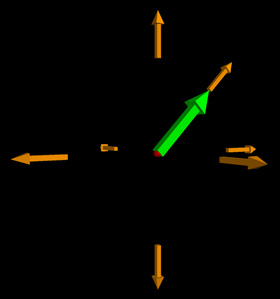
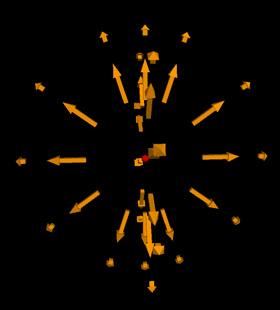
Left: Simpler version shows electric field at 7 locations. Orange arrows show electric field; green arrow shows relative position vector.
Right: More complex version shows electric field at locations in two different planes.

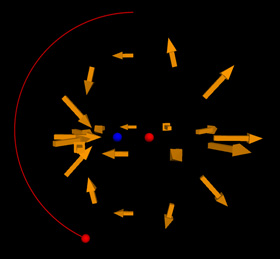
Left: Simpler version shows electric field at locations in 2 planes, including off axis locations
Right: More complex version animates motion of proton released on the y-axis.
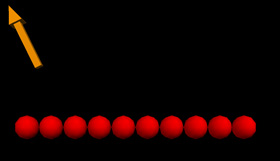
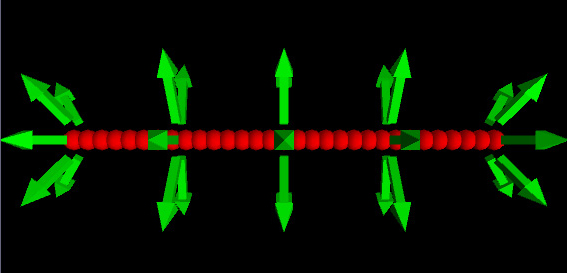
Electric field of a uniformly charged rod, approximated as a line of point charges. Left: field at a single location (off axis). Right: field at many locations.
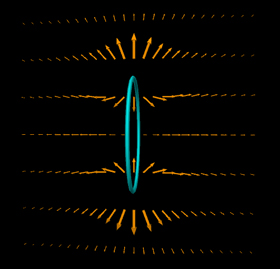
Electric field of a uniformly charged ring, approximated as a circle of point charges. Observation locations are in the midplane.
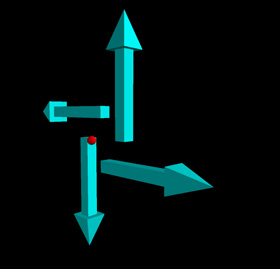

Magnetic field of a moving charged particle. As the particle moves across the screen, the magnetic field at the observation locations changes. Left: simpler version with only 4 observation locations. Right: more complex version with many observation locations.

Path of a proton moving through a uniform magnetic field (cyan arrows). The nonzero z component of the proton's momentum leads to a helical trajectory.
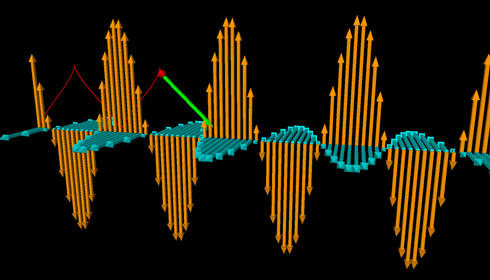 Path of a positron in an electromagnetic wave. The green arrow indicates the net electric and magnetic force on the particle at this instant.
Path of a positron in an electromagnetic wave. The green arrow indicates the net electric and magnetic force on the particle at this instant.
Path of a proton moving through a uniform magnetic field (cyan arrows). The nonzero z component of the proton's momentum leads to a helical trajectory.